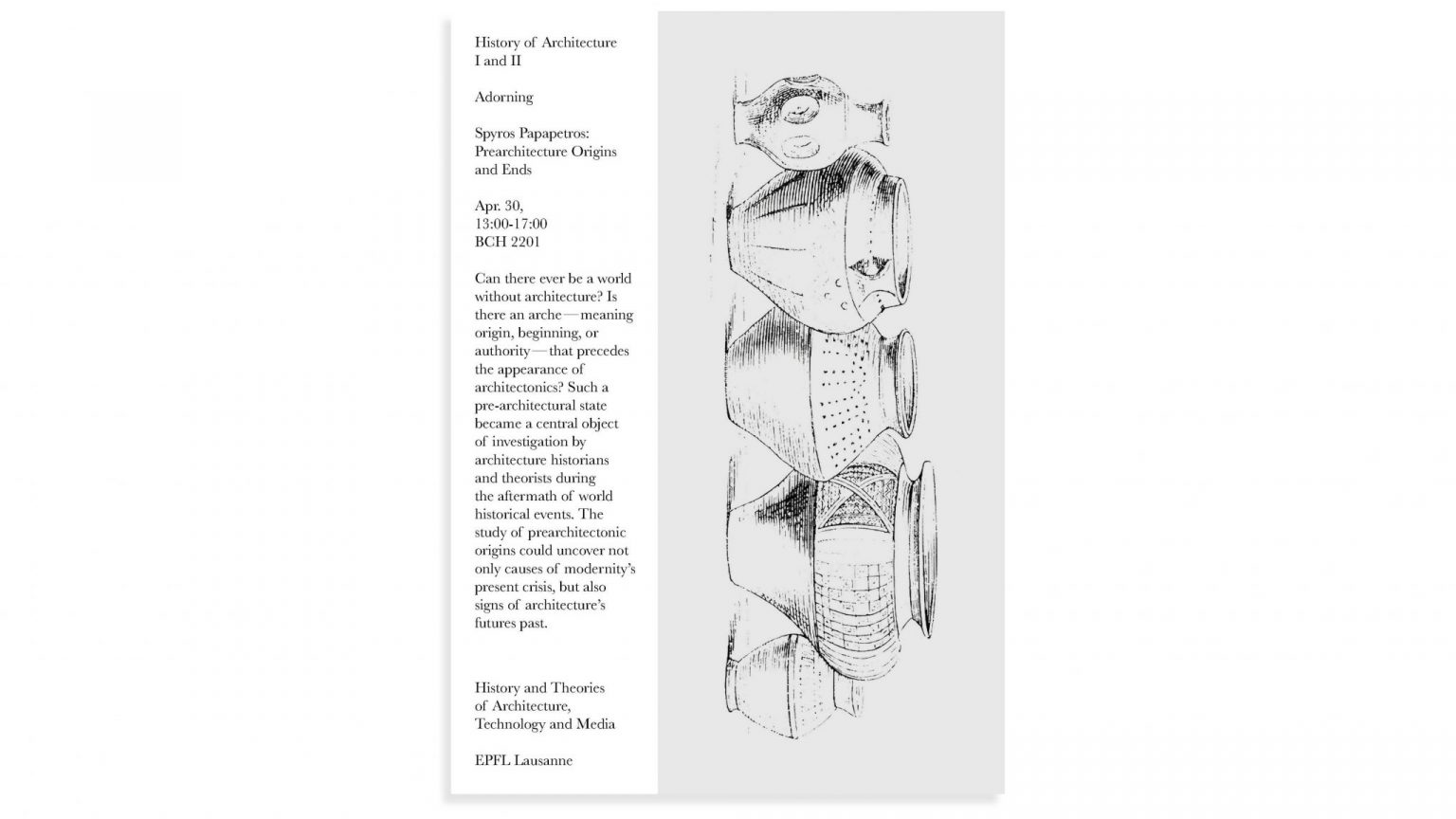Guest Lecture by Spyros Papapedros

Gottfried Semper, Der Stil in den technischen und tektonischen Künsten oder praktische Ästhetik: ein Handbuch für Techniker, Künstler und Kunstfreunde (Band 1): Die textile Kunst für sich betrachtet und in Beziehung zur Baukunst — Frankfurt a.M., Verlag für Kunst und Wissenschaft, 1860.
Prearchitecture Origins and Ends
Can there ever be a world without architecture? Is there an arche—meaning origin, beginning, or authority—that precedes the appearance of architectonics? Such a pre-architectural state became a central object of investigation by historians and theorists of architecture during the aftermath of world historical events and major political and epistemological transitions.
The narrative of “pre-architecture” starts at the middle of the nineteenth-century when the term “prearchitectonic” was used even before the institutional emergence of prehistory as a researchdiscipline. Gottfried Semper writes about the “prearchitectonic conditions” in eras beyond the known historical civilizations of the Near East, evidenced in smaller structures like ceramics but not manifest in monumental building structures. For Semper, “prearchitectonic” elements describe not a single temporal period but a general structural condition that survives the inventions of history and of architecture. Even after monumental buildings emerge, prearchitectonic remnants are grafted on their surfaces as cladding or ornament, suggesting a layered continuity between prehistoric and (proto)historic eras. Among Semper’s contemporary architectural theorists, Karl Bötticher had previously extended such pre-architectonic qualities to non-human structures, such as the inorganic forms of rocks and mountains—nature’s own “monuments”—as well as trees, whose tectonic forms inform the origins of ancient religious structures. While originally coined to demarcate the historical and geographic absence of built forms, pre-architecture ultimately signified architecture’s almost infinite expansion in an ambiguously universal, cross-temporal, and inter-species terrain.
Moving from the nineteenth to the twentieth century and the histories of modern architecture and prehistoric art by Sigfried Giedion, the study of prearchitectonic origins could uncover not only causes of modernity’s present crisis, but also signs of architecture’s futures past. By juxtaposing the fossils of prehistory with the prognostications of a post-histoire, what was ultimately invented was a pre/post/erous history—a fictional prehistory of future architectonics.